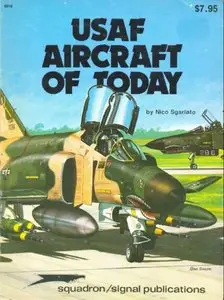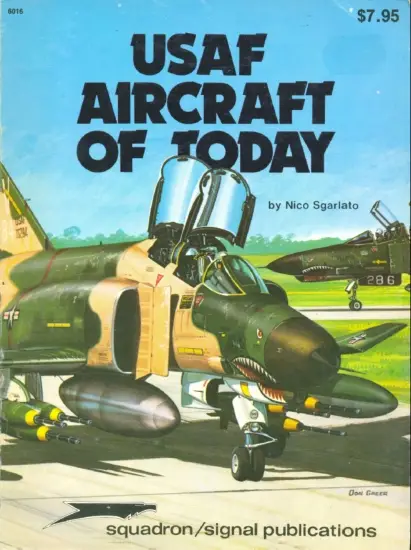USAF Aircraft of Today (Squadron-Signal 6016) By Nico Sgarlato
Publisher: Squadron/Signal Publications 1978 | 104 Pages | ASIN: B0006CZT0S | PDF | 31 MB
Publisher: Squadron/Signal Publications 1978 | 104 Pages | ASIN: B0006CZT0S | PDF | 31 MB
When the Second World War ended the United States began a highly productive period of fighter aircraft projects. Two factors contributed greatly to these fruitful enterprises on the part of the American aeronautics industry: new developments in the field of jet propulsion and new technology - mostly brought about by the contribution of Allied information regarding German wartime studies by the collaboration of many German technicians. At the same time, both the USAF and the US Navy were anxious to try new fighters of unconventional design, consequently several requests were issued. However, the appearance of nuclear weapons and the resultant strategic considerations, during the period of the Cold War, caused the United States to give priority to bombers and, consequently, to limit funds allotted to fighter projects. In 1949, however, following the unexpected news of the Soviet development of nuclear weapons, and then with the outbreak of the Korean War, production of fighters reached noteworthy proportions. The potential killing power of atomic bombers called urgently for the provision of suitable defensive arms — the ultimate expression of which would once again be manifested in the fighter aircraft. Piston power-plants had by now been greatly surpassed in performance by jet engines: attempts to adapt turboprop aircraft to mixed power units soon proved useless, while studies to perfect jet propulsion moved rapidly ahead. Initially, there were problems in designing engines with sufficient thrust, but once this problem was overcome the industry was able to concentrate on several types destined to become true milestones in the history of fighter aircraft development, and to establish solid foundations for further progress in the field. This brought the USAF in possession of several excellent aircraft: the first-rate F-84 fighter-bomber and its variants, the equally excellent Sabre F-86 interceptor, and the F-100 fighter bomber, the first supersonic aircraft of that category. The US Navy, meanwhile, developed a vast arsenal of fighter aircraft, also suitable for attack; several of these were derived from land-based types, but most were designed specifically for carrierborne duties.



